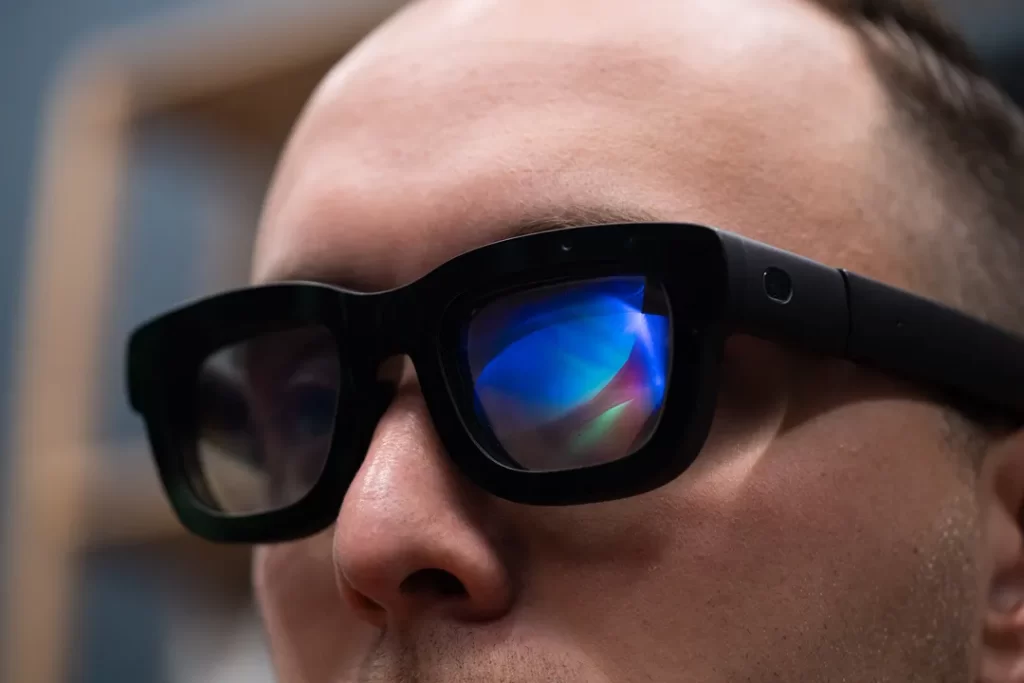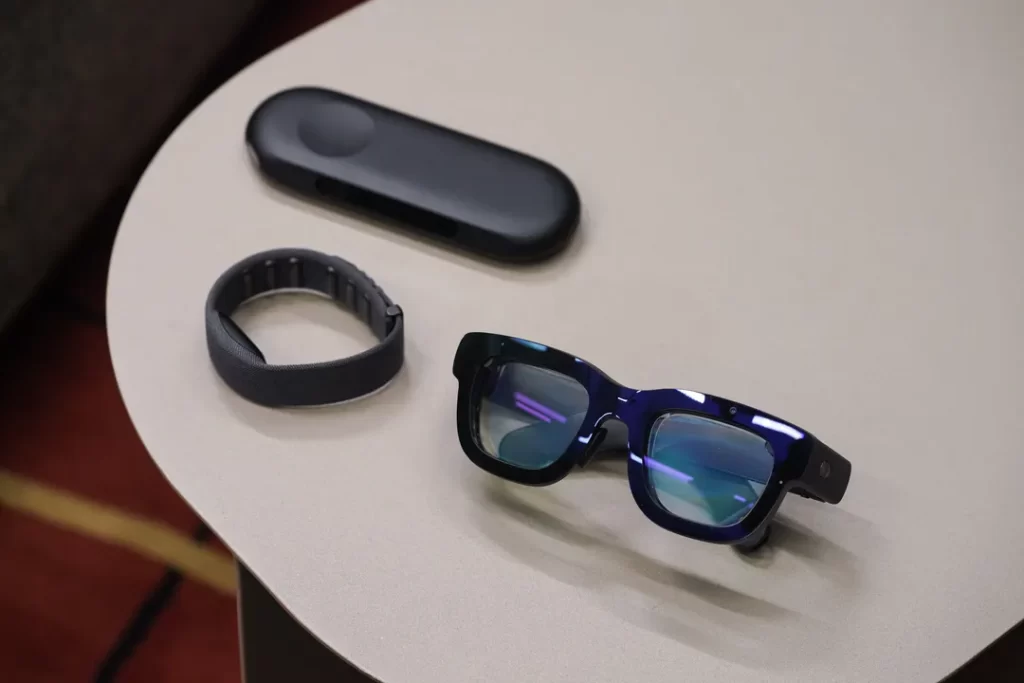Meta’s latest innovation, the Orion augmented reality (AR) glasses, marks a significant milestone in wearable technology. While initially intended for commercial release, production challenges and high manufacturing costs have delayed this launch. Nevertheless, Meta is showcasing Orion as an exciting glimpse into the future of computing, representing CEO Mark Zuckerberg’s ambitious vision for a post-smartphone world.
The Vision Behind Orion
Zuckerberg has long championed the idea that AR glasses could replace smartphones, dubbing them the “holy grail” of computing devices. The goal is to create a seamless blend of the digital and physical worlds, allowing users to interact with digital content in a way that enhances their everyday experiences. As the tech landscape evolves, companies like Meta face mounting pressure to innovate and capture consumer interest, especially with competitors like Apple and Google aggressively pursuing AR and mixed-reality technologies.
The Orion glasses are designed to be more than just a novelty; they are positioned as a tool for productivity, communication, and entertainment. Zuckerberg envisions two primary uses: enhancing communication through digital overlays—what he refers to as “holograms”—and facilitating interactions with AI. Interestingly, while the holographic capabilities were expected to precede the integration of AI, advancements in AI technology have emerged more quickly, suggesting that the future of AR may lie heavily in its ability to leverage artificial intelligence.
Technical Features of Orion

At its core, Orion is a sophisticated wearable computer. Traditional challenges in creating AR glasses include achieving lightweight, high-resolution displays that remain comfortable for prolonged use. Orion addresses these issues with its custom Micro LED projectors, which are embedded in the frames. This innovative design allows graphics to be beamed directly in front of the user’s eyes through advanced waveguides.
The lenses of Orion are crafted from silicon carbide, chosen for its durability and superior optical properties. Unlike conventional materials, silicon carbide boasts a higher index of refraction, enabling more light to fill the wearer’s field of vision. This is crucial for creating an immersive AR experience, as it minimizes the visual disconnect that can occur with lower-quality displays.
Weighing in at 98 grams, Orion is lighter than many mixed-reality headsets, yet heavier than typical eyewear. The device boasts a 70-degree field of view, which is wider than many AR glasses currently on the market. This increased field of view contributes to a more immersive experience, allowing virtual elements to blend seamlessly with the real world.
Orion is equipped with seven cameras embedded within the frames. These cameras serve multiple purposes: they anchor virtual objects in real space, assist with eye tracking, and enable Meta’s AI assistant to understand the user’s environment. This technology allows users to leave virtual windows open and interact with them as they move, enhancing the overall usability and interactivity of the device.
Interaction and Control
Interaction with Orion is achieved through a combination of eye tracking, voice commands, hand gestures, and the neural wristband that comes with the glasses. The wristband, resembling a sleek fitness tracker, employs electromyography (EMG) technology to interpret neural signals associated with hand gestures. This allows users to control the glasses with intuitive movements, making the experience feel seamless and engaging.
During demonstrations, users can perform various gestures to navigate through applications. For example, pinching fingers together can select items, while specific gestures invoke or hide app launchers. The wristband also provides haptic feedback, confirming that a gesture has been recognized. This level of responsiveness enhances user confidence and facilitates a more natural interaction with the technology.
The glasses enable various applications, from gaming to productivity tools. Users can engage in multiplayer games, controlling virtual avatars and objects using their gestures. For instance, during a demo, Zuckerberg and a journalist played a 3D version of Pong, showcasing the device’s capability for collaborative interaction. The ability to see and interact with shared digital content while physically apart demonstrates the potential for social and gaming experiences that AR can offer.
Current Limitations
Despite its impressive technology, Orion has some limitations. The battery life is capped at about two hours, which may not be sufficient for extended use. While the display quality is surprisingly good, with crisp video calls and readable text, it may not be suitable for long-form video content. Additionally, the glasses require a close connection to the wireless compute puck to function optimally; if separated by more than 12 feet, they become unusable.
The high production costs are another significant barrier. Estimates suggest that manufacturing each unit could cost around $10,000, primarily due to the difficulties associated with producing silicon carbide lenses. This financial constraint led Meta to pivot from a broader consumer release to focusing on a limited number of units for internal testing and external demonstrations.
Future Prospects and Roadmap

Looking ahead, Meta plans to introduce a model known as Hypernova, which will feature a smaller heads-up display and is expected to be more affordable. This gradual evolution underscores Zuckerberg’s commitment to making AR a practical tool for everyday use. The company aims to bridge the gap between cutting-edge technology and user-friendly applications, ensuring that future iterations of Orion are not only functional but also accessible to a broader audience.
Meta’s executives are cautiously optimistic about the future of AR. They acknowledge that Orion represents a significant step forward but emphasize that it is not yet ready for mass consumption. The focus remains on refining the technology, improving resolution, brightness, and reducing costs. As Meta continues to iterate on its designs, the goal is to create glasses that are not only technologically advanced but also aesthetically appealing and comfortable for everyday wear.
Competitive Landscape
As Meta navigates the AR landscape, it faces stiff competition from established players like Apple and Google, both of which are investing heavily in AR and mixed-reality technologies. Apple’s Vision Pro, for example, is a strong contender that has already generated considerable buzz. Additionally, companies like Snap are racing to win over developers with their next-generation AR Spectacles.
Zuckerberg’s long-standing frustration with the dominance of mobile platforms, particularly Apple’s App Store, has fueled his determination to carve out a space for Meta in the AR ecosystem. By creating a standalone AR experience that doesn’t rely on traditional smartphones, Meta hopes to redefine how users interact with technology.
Conclusion
In conclusion, Meta’s Orion glasses represent a significant advancement in augmented reality technology, showcasing the company’s commitment to innovation. While the road to commercial release may be challenging, the potential applications for AR are vast, spanning communication, entertainment, and productivity.
As Meta continues to refine Orion and develop new iterations, the tech community will be watching closely. With the competition heating up and consumer expectations rising, the success of Orion could determine Meta’s standing in the rapidly evolving AR market. For now, it remains to be seen whether these impressive prototypes will translate into mainstream products that consumers are eager to adopt.
Stay informed on Meta’s ongoing developments in augmented reality and the future of wearable technology.

